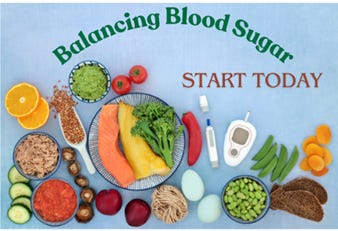7 Practical Tips to Keep Glucose Numbers in Check — Naturally
Why Functional Nutrition Matters for Gestational Diabetes
When you’re handed a diagnosis of gestational diabetes, it’s easy to feel like your body has betrayed you, or that your only option is medication. But here’s the truth: your body is communicating, not failing. And functional nutrition is the language we use to understand and respond.
Functional nutrition looks beyond calories and blood sugar readings. It asks deeper questions:
What’s driving this insulin resistance?
Are your nutrient stores supporting or sabotaging glucose control?
Is stress, sleep, gut health, or inflammation playing a role?
Gestational diabetes is about more than managing numbers—it’s about restoring metabolic balance. That’s where functional nutrition excels. By using real food to nourish the whole body—rather than just treating symptoms—we support your body’s ability to respond to pregnancy’s natural changes in hormones, blood sugar, and insulin.
“When you feed your body what it truly needs, it starts to respond with balance—and that’s the real power of functional nutrition.”
The tips below are simple, science-based, and based on a whole-person approach. Whether you’re newly diagnosed or trying to prevent blood sugar spikes completely, these practical strategies are your starting point for consistent energy, better numbers, and a stronger bond with your growing baby.
Let’s get into it.
Managing gestational diabetes doesn’t have to feel overwhelming. With a few practical habits, you can lower your glucose readings and feel better—one meal, one walk, one breath at a time.
Here are my seven go-to strategies, along with real stories from real mamas who made it work.
1. Balance Your Plate at Every Meal
“The best blood sugar tip? Never eat carbs alone.”
Build every meal and snack around three key elements: protein, healthy fat, and fiber-rich carbohydrates. This trio works together to support steady blood sugar, balanced energy, and long-lasting satiety—especially important for breastfeeding, hormone balance, or healing from inflammation. Protein provides the building blocks for tissue repair and immune support; healthy fats nourish the brain and hormones while enhancing the absorption of fat-soluble vitamins; and fiber-rich carbs, such as fruits, vegetables, and whole grains, feed your gut microbiome and help regulate digestion. When you include all three, you're not just eating—you’re fueling with purpose. Think: scrambled eggs, spinach, and sprouted toast with avocado.
Story: Jamila’s Mornings
Jamila started her day with toast and jelly—until she switched to eggs, sautéed greens, and ½ slice of toast. Her 1-hour glucose readings dropped by 40 points in one week.
2. Walk for 15 Minutes After Eating
Exercise helps remove glucose from the blood. It is one of our most effective tools for naturally managing blood sugar. When you move—like walking, dancing, or lifting weights—your muscles burn glucose for energy. This enables muscle cells to absorb glucose directly from the blood, even in the absence of insulin. Over time, regular physical activity also improves insulin sensitivity, helping your body process glucose more effectively after meals. For individuals experiencing blood sugar fluctuations, insulin resistance, or early signs of gestational diabetes, incorporating movement throughout the day can significantly improve metabolic health. Even a quick walk can make a difference.
Story: Liz’s Stroller Walks
After dinner, Liz put her toddler in the stroller for a 15-minute walk. Her post-dinner glucose levels consistently dropped from 165 to 132.
3. Prioritize Sleep & Rest
Keep reading with a 7-day free trial
Subscribe to Nourish & Nurture – Functional nutrition insights to keep reading this post and get 7 days of free access to the full post archives.


